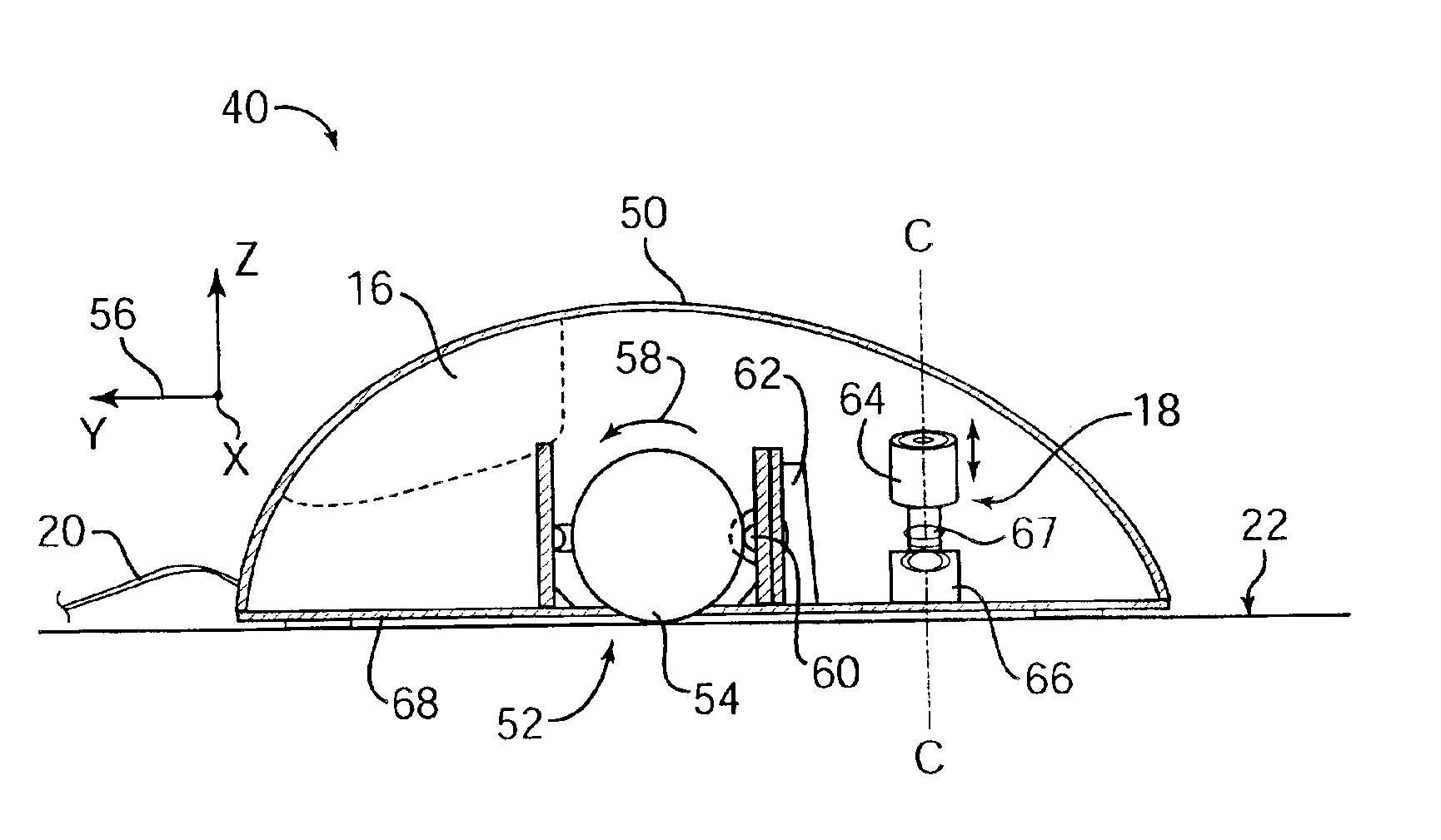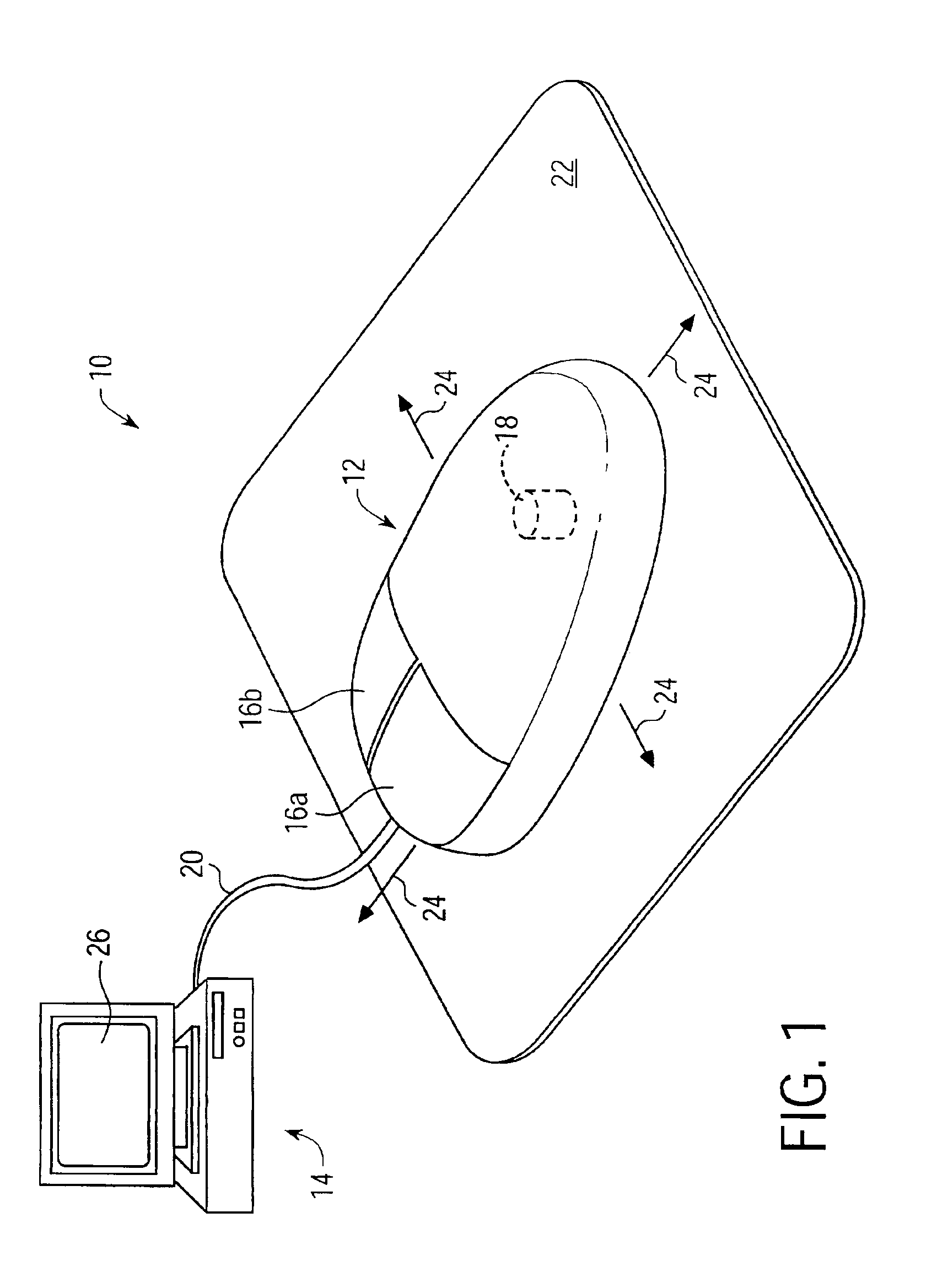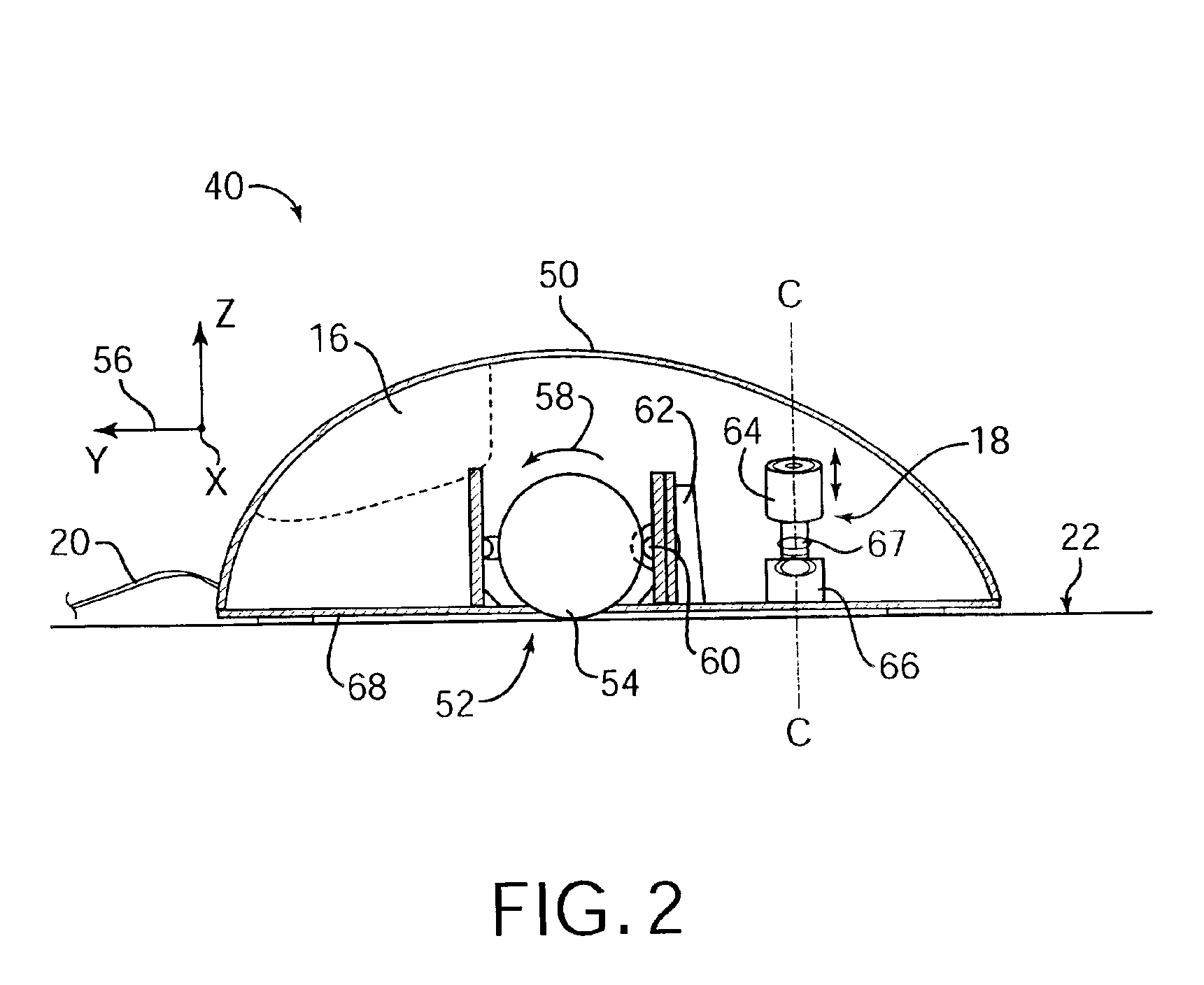Haptic sensations for tactile feedback interface devices
a technology of tactile feedback and interface devices, which is applied in the field of haptic feedback, can solve the problems of limited ability to convey certain types of haptic sensations to the user, less sophisticated tactile devices than kinesthetic devices, and much less expensive production, and achieves the effects of reducing the magnitude of the haptic sensation, and reducing the difficulty of haptic sensations
- Summary
- Abstract
- Description
- Claims
- Application Information
AI Technical Summary
Benefits of technology
Problems solved by technology
Method used
Image
Examples
Embodiment Construction
[0018]FIG. 1 is a perspective view of a haptic feedback mouse interface system 10 suitable for use with the present invention and capable of providing input to a host computer based on the user's manipulation of the mouse and capable of providing haptic feedback to the user of the mouse system based on events occurring in a program implemented by the host computer. Mouse system 10 includes a mouse 12 and a host computer 14. It should be noted that the term “mouse” as used herein, indicates an object generally shaped to be grasped or contacted from above and moved within a substantially planar workspace (and additional degrees of freedom if available). Typically, a mouse is a smooth or angular shaped compact unit that snugly fits under a user's hand, fingers, and / or palm, but can also be implemented as a grip, finger cradle, cylinder, sphere, planar object, etc.
[0019]Mouse 12 is an object that is preferably grasped or gripped and manipulated by a user. By “grasp,” it is meant that us...
PUM
 Login to View More
Login to View More Abstract
Description
Claims
Application Information
 Login to View More
Login to View More - R&D
- Intellectual Property
- Life Sciences
- Materials
- Tech Scout
- Unparalleled Data Quality
- Higher Quality Content
- 60% Fewer Hallucinations
Browse by: Latest US Patents, China's latest patents, Technical Efficacy Thesaurus, Application Domain, Technology Topic, Popular Technical Reports.
© 2025 PatSnap. All rights reserved.Legal|Privacy policy|Modern Slavery Act Transparency Statement|Sitemap|About US| Contact US: help@patsnap.com



